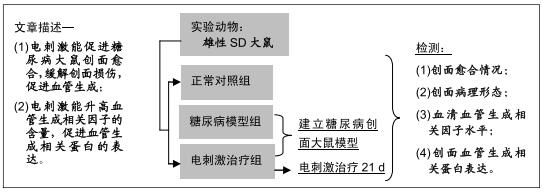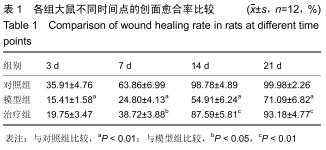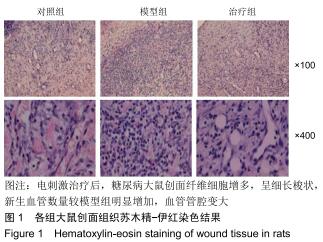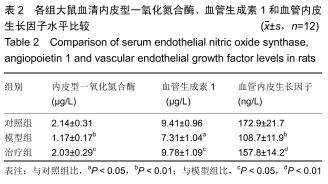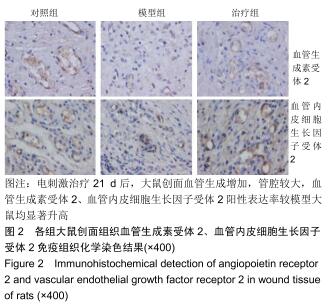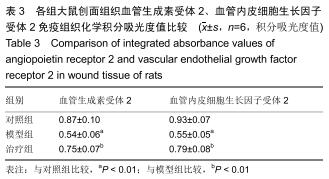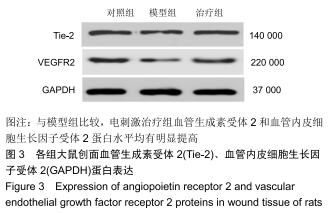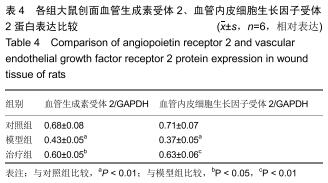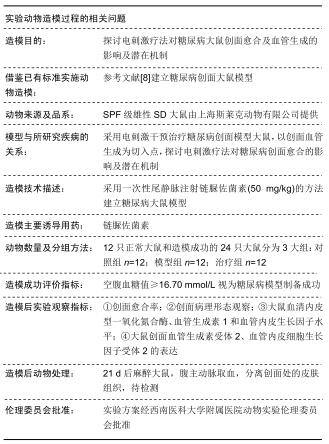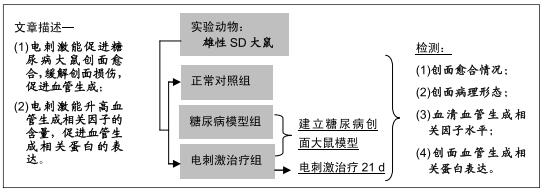|
[1] International Diabetes Federation. IDF Diabetes Atlas, 8th ed. Brussels: International Diabetes Federation.2017.
[2] LIU H, DUAN Z, TANG J, et al. A short peptide from frog skin accelerates diabetic wound healing. FEBS J.2014;281(20):4633-4643.
[3] 赵敏超,赵敏越,袁伟健,等.局部应用胰岛素促进糖尿病创面愈合的研究进展[J].医学综述,2018,24(20):4078-4085.
[4] 向鹏君,季晖,顾铭.糖尿病创面的炎症机制研究进展[J].药学研究,2017, 36(11):667-670.
[5] LI W, KANDHARE AD, MUKHERJEE AA. Hesperidin, a plant flavonoid accelerated the cutaneous wound healing in streptozotocin-induced diabetic rats: Role of TGF-ß/Smads and Ang-1/Tie-2 signaling pathways. EXCLI J.2018;17(4):399-419.
[6] RUFAIHAH AJ, JOHARI NA, VAIBAVI SR, et al. Dual delivery of VEGF and ANG-1 in ischemic hearts using an injectable hydrogel. Acta Biomater.2017;48(15):58-67.
[7] KADO M, TANAKA R, ARITA K, et al. Human peripheral blood mononuclear cells enriched in endothelial progenitor cells via quality and quantity controlled culture accelerate vascularization and wound healing in a porcine wound model.Cell Transplant.2018;27(7):1068-1079.
[8] 李少源,翟煦,荣培晶,等.电针耳甲区对2型糖尿病大鼠痛觉障碍及抑郁症状的影响[J].中医杂志,2014,55(2):148-152.
[9] KIM TH, CHO HY, LEE SM. High-voltage pulsed current stimulation enhances wound healing in diabetic rats by restoring the expression of collagen, α-smooth muscle actin, and TGF-β1. Tohoku J Exp Med. 2014;234(1):1-6.
[10] 王芳,栗勇,苏映军,等.糖尿病难愈创面应用小剂量胰岛素:上皮化、纤维化及血管新生[J].中国组织工程研究,2013,17(20):3650-3657.
[11] THAKRAL G, LAFONTAINE J, NAJAFI B, et al. Electrical stimulation to accelerate wound healing. Diabet Foot Ankle. 2013;16:4-11.
[12] VATANKHAH N, JAHANGIRI Y, LANDRY GJ, et al. Effect of systemic insulin treatment on diabetic wound healing. Wound Repair Regen. 2017;25(2):288-291.
[13] JI XY, CHEN Y, YE GH, et al. Detection of RAGE expression and its application to diabetic wound age estimation. Int J Legal Med.2017; 131(3):691-698.
[14] YE J, KANG Y, SUN X, et al. MicroRNA-155 Inhibition Promoted Wound Healing in Diabetic Rats[J]. Int J Low Extrem Wounds.2017; 16(2):74-84.
[15] ZENG Z, HUANG WD, GAO Q, et al. Arnebin-1 promotes angiogenesis by inducing eNOS, VEGF and HIF-1α expression through the PI3K-dependent pathway. Int J Mol Med.2015;36(3):685-697.
[16] 吴子涵,李高峰.瘢痕成熟过程中血管生成素1表达与瘢痕血管的变化[J].中国组织工程研究,2017,32(21):5158-5163.
[17] BOUCHERAT O, FRANCO-MONTOYA ML, DELACOURT C, et al. Defective angiogenesis in hypoplastic human fetal lungs correlates with nitric oxide synthase deficiency that occurs despite enhanced angiopoietin-2 and VEGF. Am J Physiol Lung Cell Mol Physiol.2010; 298(6): 849-856.
[18] LI J, ZHANG Y, LI C, et al. HSPA12B attenuates cardiac dysfunction and remodelling after myocardial infarction through an eNOS-dependent mechanism. Cardiovasc Res.2013;99(4):674-684.
[19] SADATI SM, RADFAR M, HAMIDI AK, et al. Association Between the Polymorphism of Glu298Asp in Exon 7 of the eNOS Gene With Foot Ulcer and Oxidative Stress in Adult Patients With Type 2 Diabetes. Can J Diabetes.2018; 42(1): 18-22.
[20] WANG X, XIU P, WANG F, et al. P18 peptide, a functional fragment of pigment epithelial-derived factor, inhibits angiogenesis in hepatocellular carcinoma via modulating VEGF/VEGFR2 signalling pathway. Oncol Rep.2017;38(2):755-766.
[21] MENG Q, SHAO L, LUO X, et al. Expressions of VEGF-A and VEGFR-2 in placentae from GDM pregnancies.Reprod Biol Endocrinol. 2016;14(1):61-70.
[22] BITTO A, MINUTOLI L, GALEANO MR, et al. Angiopoietin-1 gene transfer improves impaired wound healing in genetically diabetic mice without increasing VEGF expression. Clin Sci.2008;114(12): 707-718.
[23] CHEN JX, TUO Q, LIAO DF. Inhibition of protein tyrosine phosphatase improves angiogenesis via enhancing Ang-1/Tie-2 signaling in diabetes. Exp Diabetes Res.2012;2012:836759.
[24] CHAN W, ISMAIL H, MAYAKI D, et al. Fibulin-5 Regulates Angiopoietin-1/ Tie-2 Receptor Signaling in Endothelial Cells. PLoS One.2016;11(6): e0156994.
[25] 刘帅,刘学政.Ang-1/Tie2系统与病理性血管形成的关系[J].解剖科学进展, 2010,4(1):85-88.
[26] 胡夏晓,张文倩,刘炳男. Ang-1和Tie-2在血管生成中的作用及中医药干预研究进展[J].中医药临床杂志,2018,30(8):1391-1394.
[27] WAKUI S, YOKOO K, MUTO T, et al. Localization of Ang-1, -2, Tie-2, and VEGF expression at endothelial-pericyte interdigitation in rat angiogenesis. Lab Invest.2006;86(11):1172-1184.
|
